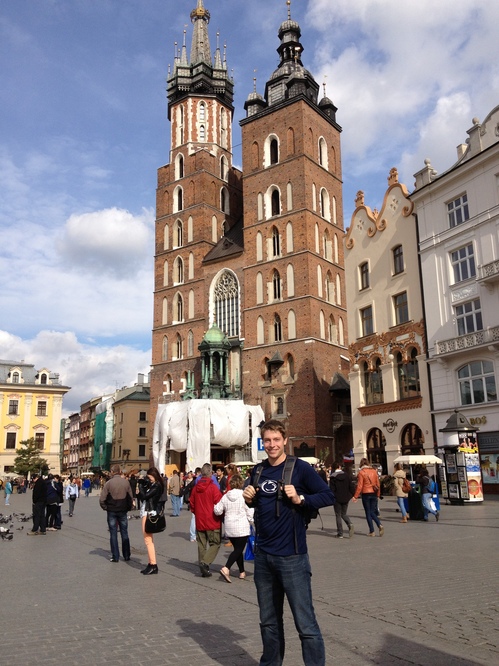Germany wants to have its cake and eat it too, but when the baker is unemployed and the mill is out of order, cake production is dubious at best. Such is life in the European Union. Germany’s southern neighbors, particularly Spain, Italy, Portugal, and Greece, are suffering. Unemployment in these countries is higher than at any other point in modern times, with as many as 60 percent of Spanish youths unable to find gainful employment. Political unrest, an unfortunate side effect of economic turmoil, has taken root. People want work, security, and a return to normalcy.
For many in Southern Europe, the promise of a better tomorrow lies to the north. France, often considered one of Europe’s foremost powers, is wrestling with its own economic stagnation and has been largely unable to coalesce under the unpopular Hollande regime. The United Kingdom, home to the world’s second-largest stock market and the continent’s second largest economy, is still reeling from the effects of the 2008 financial crisis. Thanks to its interconnectedness with the United States, the British Isles were hit especially hard by the financial collapse, prompting a decline in home prices and a rise in household debt. The Scandinavian countries, while economically resilient and politically stable, lack the means to bail out Southern Europe.
With this in mind, it is quite easy to understand Germany’s attractiveness. Under the government of Chancellor Angela Merkel, Germany grew during the 2008 financial crisis, one of the only developed nations to do so. Since then, Germany has continued to grow. Unemployment stands at a mere 5.2 percent, some five times lower than the 27.6 percent unemployment rate currently afflicting Greece. German gross domestic product per capita (GDP per capita), a common measure of countries’ wealth, is a healthy $39,100. While this indicator is often quite a bit higher in small developed countries such as Luxembourg ($79,168), Norway ($65,656), and Switzerland ($55,066), do not be misled. British GDP per capita comes in at $37,500. France reports a rather meager $29,819 GDP per capita. Among Europe’s largest, most powerful countries, Germany is alone in first place.
It is for this reason that so many in the European Union want Germany to assume a greater level of responsibility and lead the union out of the ongoing crisis. In their eyes, no other member state is better equipped to turn things around.
At first, Germany appeared to embrace its new role with grim determination. When the waves of the 2008 financial crisis first reached the shores of Europe, Germany came to the rescue with bailouts funded by German taxpayers. Since then, some $320 billion (from the International Monetary Fund and Greece’s European partners, led by Germany) have been poured into Greece alone. Though Germany’s bailouts are far from selfless–Germany benefits tremendously from the free flow of its goods and services across union borders–it is worth noting that Germany’s government debt to GDP ratio has jumped considerably as a result of its bailouts. As of 2008, debt to GDP stood at an impressive 64.9 percent. It is now 81.9 percent.
This bitter German medicine, however, has proven hard to swallow; since accepting the bailouts, several nations have criticized the austerity terms dictated by Berlin. To correct the imbalance between spending and saving, governments accepting bailout moneys were required to slash spending dramatically. The resulting cut in government services resulted in less generous healthcare, less police protection, and pay cuts. Understandably, these measures were less than popular.
In Cyprus, one of the world’s premier banking havens and a recent recipient of bailout moneys, German austerity measures provoked a considerable anti-Merkel backlash. Angry Cypriots drew Hitler-esque mustaches on posters of Angela Merkel, likening the injustice of austerity to the tyranny of Nazi Germany. While extreme, Cyprus was not alone in making the comparison. Greeks, for example, reacted to the bailouts by creating photoshopped images of Merkel in an SS guard uniform. Around Europe, it has become popular to demand an end to “German fiscal fascism”.
In Berlin, where bullet holes still riddle the walls of churches, schools, homes, and businesses, such reminders of Nazi domination diminish what little political ambition Germans still harbor. In many ways, the desire for leadership has been eradicated from German society. The German president, unlike his counterpart in the United States, has so little power that most Germans do not know his name. Chancellor Merkel, the country’s most visible politician, serves only as the head of government. As such, she has very limited input on military affairs. F�hren, the German verb for “lead”, remains taboo. Many have adopted the germanified verb leiten, which was adapted from the English word “lead”.
In his article “The German Election: What Europe Expects–And What Germany Will Not Do,” Ulrike Guerot of the European Council on Foreign Relations analyzes Germany’s leadership reluctance thusly:
“The biggest risk, therefore, is of European post-election disillusion because Germany’s approach to Europe is unlikely to change. Berlin quite simply lacks the political ambition to provide clear leadership in turbulent times. Rather, it hopes to influence events by force of example, getting others to transpose the German model of thriftiness at home and competitiveness abroad into their own financial, economic, and political cultures. This, most Germans believe, is the only way for Europe to succeed in an increasingly competitive and globalised world.”
Whether the rest of the European Union ultimately adopts this philosophy remains to be seen.
Location: Berlin - Krausnickstrasse



